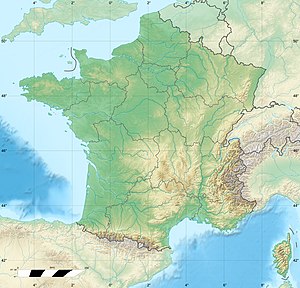
Back معركة باريس (1814) Arabic Узяцце Парыжа (1814) Byelorussian Emgann Pariz (1814) Breton شەڕی پاریس (١٨١٤) CKB Bitva o Paříž Czech Schlacht bei Paris German Μάχη του Παρισιού (1814) Greek Batalla de París (1814) Spanish نبرد پاریس (۱۸۱۴) Persian Pariisin taistelu (1814) Finnish
This article needs additional citations for verification. (March 2014) |
| Battle of Paris | |||||||||
|---|---|---|---|---|---|---|---|---|---|
| Part of the Campaign of France of the Sixth Coalition | |||||||||
 The defense of Clichy during the battle, painting by Horace Vernet (1820). In the centre, Marshal Moncey gives his orders to goldsmith Jean-Baptiste Odiot, colonel of the National Guard, for whom the painting was made. | |||||||||
| |||||||||
| Belligerents | |||||||||
|
|
| ||||||||
| Commanders and leaders | |||||||||
|
|
| ||||||||
| Strength | |||||||||
| 29,000–42,000[1] |
Russia: 100,000 Austria: 15,000 Prussia: 40,000 Total: 100,000[1]–155,000 | ||||||||
| Casualties and losses | |||||||||
| 5,000–9,300[1] killed, wounded or captured | 9,000[1]–18,000 killed, wounded or captured | ||||||||
Location within France | |||||||||
current battle
Napoleon in command
Napoleon not in command


The Battle of Paris (or the Storming of Paris[2]) was fought on 30–31 March 1814 between the Sixth Coalition, consisting of Russia, Austria, and Prussia, and the French Empire. After a day of fighting in the suburbs of Paris, the French surrendered on 31 March, ending the War of the Sixth Coalition and forcing Emperor Napoleon to abdicate and go into exile.
- ^ a b c d e Bodart 1908, p. 480.
- ^ Velichko et al. 1912.

